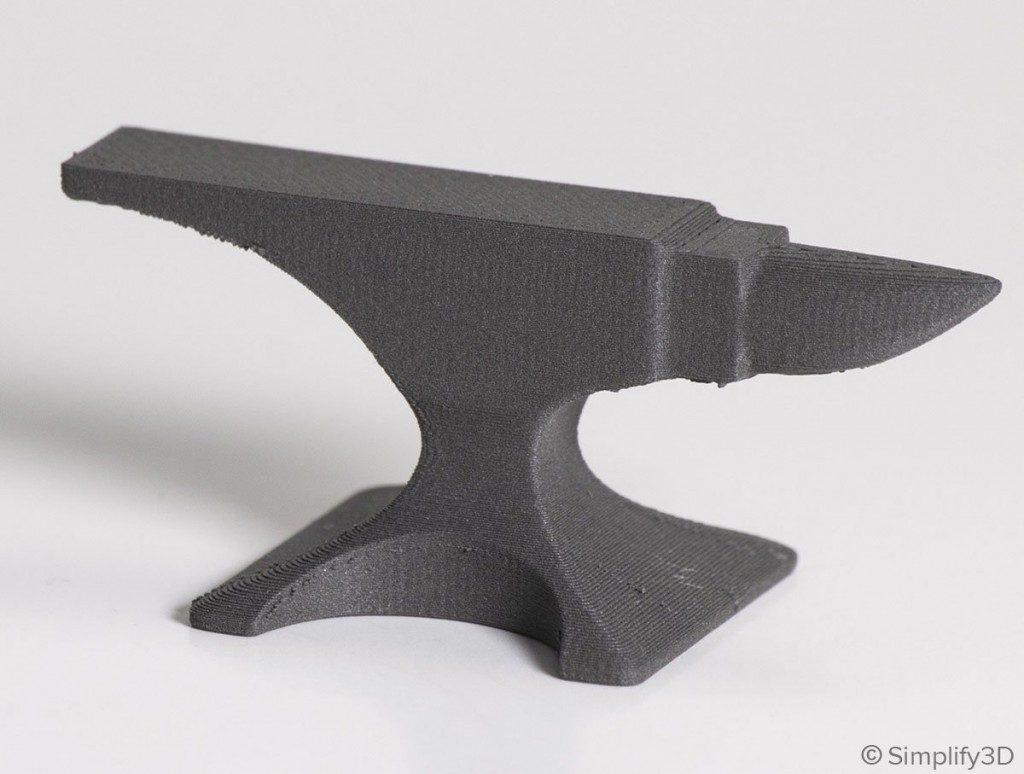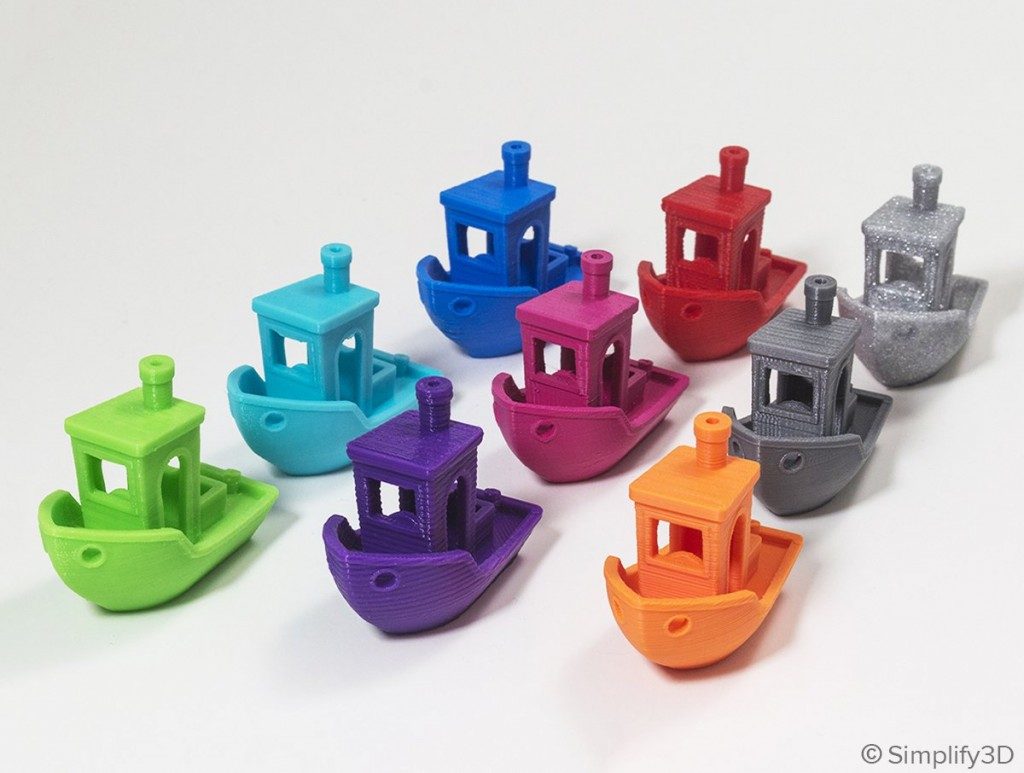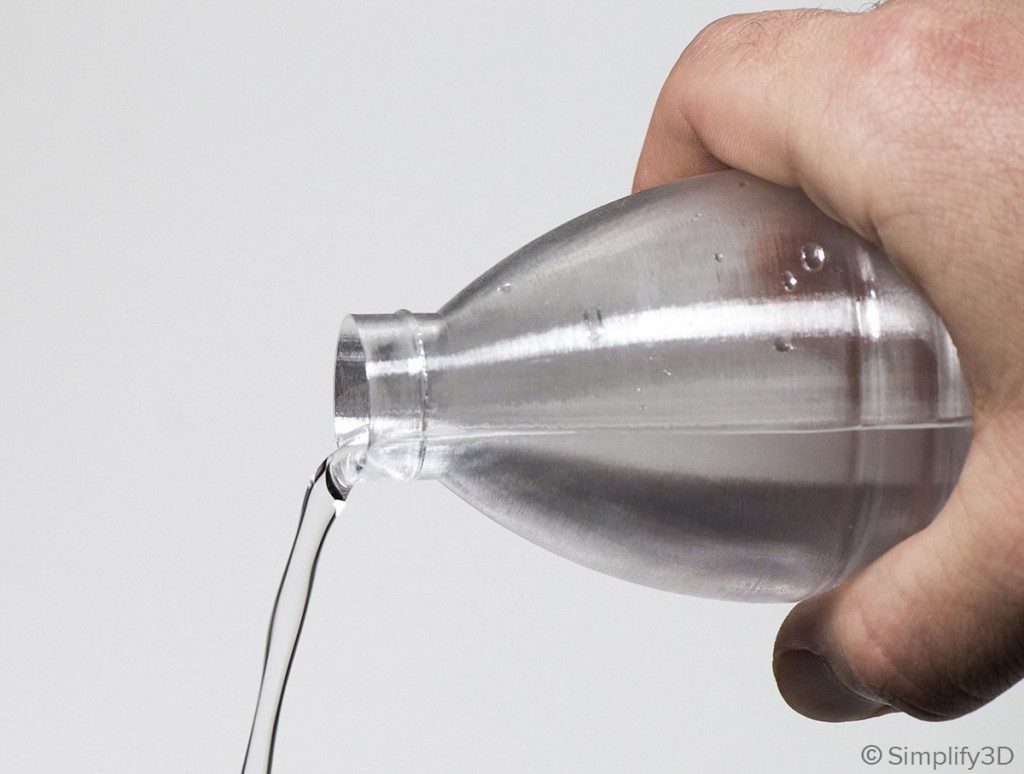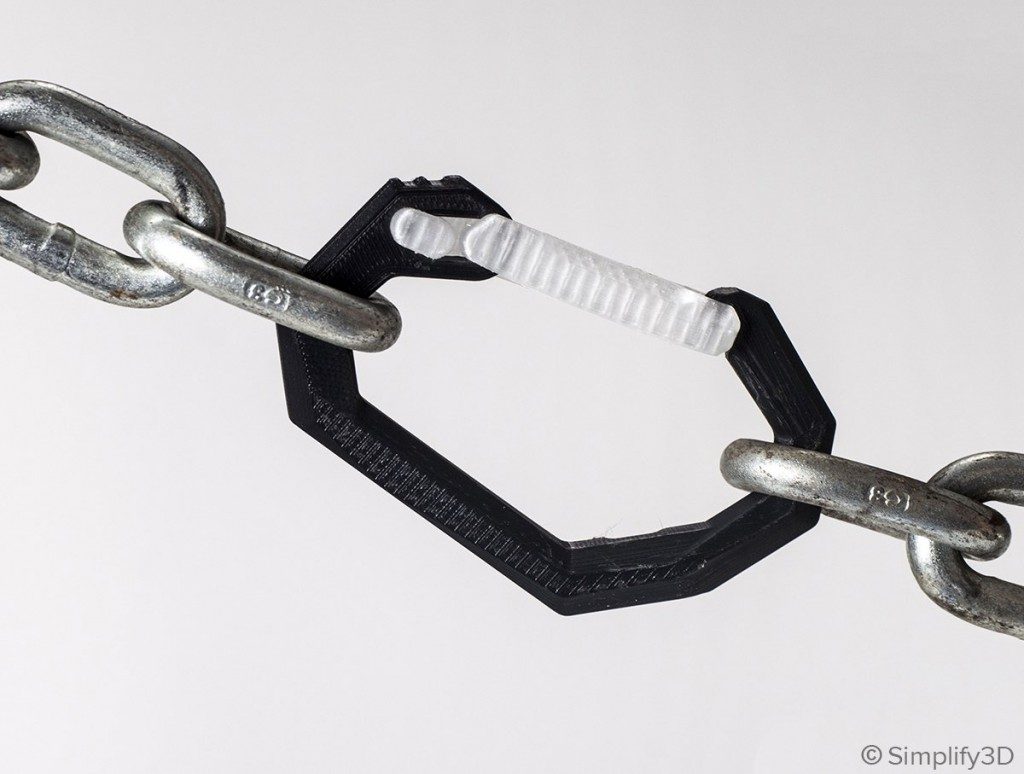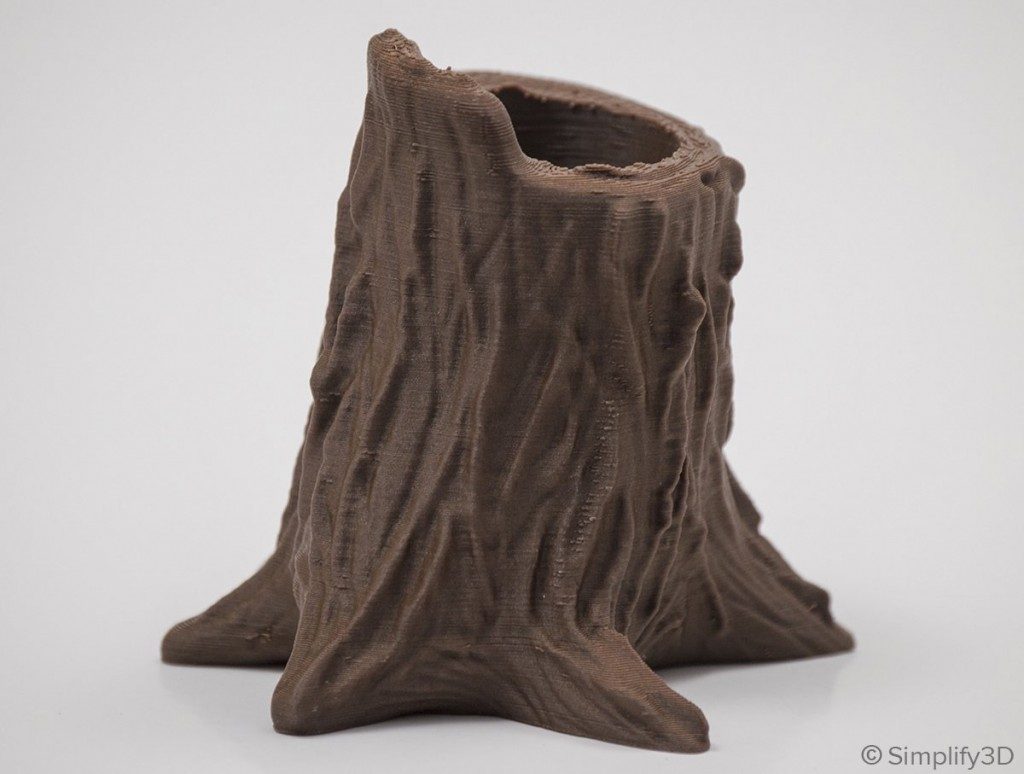Metal Filled
Metal filled filaments are made by mixing a fine metal powder into a base material, providing a unique metallic finish and added weight.
Overview
Metal filled filaments contain very fine metal powder such as Copper, Bronze, Brass, and Stainless Steel. The percentage of metal powder infused in each filament can vary depending on the manufacturer. The presence of this metal powder makes the filament much heavier than standard plastics. This means that the parts printed with metal-filled PLA will weigh significantly more than ones from the standard PLA, despite using the same settings and consuming the same amount of material. Metal filled filaments also tend to be very abrasive as they are extruded through the hotend. A standard brass nozzle will be too soft and will quickly wear down. Be sure to upgrade to a wear resistant nozzle in order to print this filament effectively. There are other metal-like filaments in the market that may just have metallic coloring added to the filament. These filaments do not contain any actual metal powder, so they do not share many of the same benefits of the true metallic filaments. This article will focus on materials that contain actual metal powders for a realistic metallic weight and feel.
Pros
- Metallic finish is aesthetically appealing
- Does not need high-temperature extruder
- Heavier than standard filaments
Cons
- Requires a wear-resistant nozzle
- Printed parts are very brittle
- Very poor bridging and overhangs
- Can cause partial clogs over time
- Expensive
Hardware Requirements
Before 3D printing with metal filled filament make sure your 3D printer meets the hardware requirements listed below to ensure the best print quality.
Best Practices
These tips will help you reduce the chances of common 3D printing issues associated with metal filled filaments such as clogging, the nozzle wearing down, poor bridging, and blobs left on the surface of the print.
Use Wear-Resistant Nozzles
Most 3D printers ship with brass nozzles that are relatively soft. Since metals can be abrasive in general, brass nozzles can easily wear out when used with metal filled filaments. Upgrading to a wear-resistant nozzle will help reduce the wear significantly. Another aspect to consider while upgrading is the nozzle size. Although it is possible to print with standard 0.4mm nozzles, metal particles tend to clump around the orifice and can cause clogging over extended periods of use. Nozzle sizes of 0.5 – 0.6 mm seem to work better for metal filled filaments. It is also good to periodically check the nozzle orifice for any visible wear. Worn out nozzles can otherwise result in inconsistent extrusion and reduced overall quality of the printed parts.
Be Aware of Bridging Limitations
Metal filled filaments are quite heavy, which has an impact on their bridging performance. When the molten plastic is extruded across either side of the bridge, it droops excessively and eventually breaks before it can complete the bridge. This means that parts with lots of large bridging regions will be very difficult to print.
Simplify3D Version 4.0 added several new features related to bridging, including one that allows you to completely customize the direction of this bridging fill. If you have a part that requires bridging and there is no way to avoid it, you might find that there is a specific fill angle that will work best for this material. The software also allows you to customize the exact speed and extrusion rate used for the bridges, so you can experiment to find what works best for your material. Other successful methods would be to add support structures to support any potential overhangs, or consider using a dual extrusion system with a dissolvable support structure such as PVA. Simplify3D includes a feature called Dense Supports, which allows you to use this PVA material very sparingly, only at the interface between the supports and the part, so this can be a great option as well.
Check the Filament Path for Sharp Bends
Metal filaments are very brittle in general. This affects the final parts, but it also applies to the raw filament itself which needs to be pulled into the printer as it is extruded. If you follow the filament path from the spool, all the way to the extruder, check for any sharp angles or curves which may put too much stress on the filament. We found that many printers included sharp bends that had a tendency to cause the filament to snap in the middle of printing. You may notice this happens more as the toolhead moves around during the print, since different toolhead positions may put more stress on the filament as it bends to move to the new location. One great way to avoid this is the change the location where the filament spool is mounted. Start by mounting the spool on top of the printer and try to minimize the distance from the spool to the extruder.
Additionally, a strong filament guide tube that limits the bend in the filament path will prevent most breakages.
Tune Your Retraction Settings
Like wood filled and other composites materials, retractions with metal filled filaments can be rather challenging. The presence of metal powder makes it difficult for the nozzle to contain the suction pressure in the melt chamber during retraction. This will frequently lead to blobs at the beginning and end of each printed segment, where the extruder was trying to start or stop the plastic extrusion. Simplify3D has several features that can be a big help in this situation. The first is a unique feature called Coasting, which will automatically reduce the pressure in the nozzle right before the end of a print segment. This greatly reduces oozing when moving to the next print segment, so it can be a great option to consider. You can also try setting the “extra restart distance” to a negative value of -0.1 or -0.2mm, as this can help with the blobs that may form at the start of each segment. For more tips on how to reduce these blobs, please refer to our Print Quality Guide: How to Reduce Blobs and Zits.
Pro-Tips
- To prevent the chances of clogging, you can greatly reduce the number of retractions in Simplify3D by enabling the “Only retract when crossing open spaces” option or disabling “Force retraction between layers”. Both of these settings can be found on the Advanced tab of your process settings.
- Due to the heavy nature of this material, metal filled filaments typically do quite poorly when printing overhangs or bridges. To reduce the number of overhangs required for your print, try reducing the layer height to 0.1 or 0.15mm. This can significantly improve overhang performance.
Get Started with Metal Filled Filaments
There are many unique applications for these specialty filaments. We’ve put together a list of common applications, sample projects, and even popular brands of filament to help you get started.
How does these metal filaments compare to other common materials?
Click below to view our extensive Properties Table with a complete side-by-side comparison.

